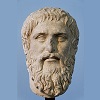1.2: Introduction to Prehistory
- Page ID
- 1171
In 1952, at the age of 77 and suffering with an abdominal hernia long overdue for surgery, Sellards returned to Vero to collect charcoal or bone suitable for the newly invented technique of radiocarbon dating. … His longtime field assistant Glen Evans accompanied him, having left Texas with careful instructions from Sellard’s physician about what to do if the hernia suddenly bulged. It did, and Sellards collapsed unconscious at the excavation. … But the moment Sellards regained consciousness he insisted on continuing to excavate.1
The above case of Florida State Geologist Elias Sellards demonstrates that the study of “human antiquity” or man’s earliest origins is one surrounded by passion, controversy, and a deep well of curiosity. Our curiosity about our earliest origins has not only given birth to fictional characters like Indiana Jones and Captain Kirk, but also is largely responsible for the growth of archaeology in the early twentieth century. Western scholars and explorers were not content with simply reaching remote places; they were curious about their earliest human inhabitants. While the motives of early excavators may have been quite simple (Well-known paleoanthropologist Richard Leakey got his start collecting stones as a child), archaeologists and paleoanthropologists eventually created an entirely new field of historical investigation: prehistory. Multiple pioneers have hacked through underbrush or spent months excavating Paleolithic sites. Not until recently, however, have scientific advances, local knowledge, and anthropological theory merged with the curiosity of western explorers to craft a more accurate version of human origins and evolution.
Written texts are the primary sources most historians are trained to work with and are those they are most comfortable using. However, if we are to understand humanity’s origins, we have to recognize that written language is a relatively recent invention (around 5,000 years old); therefore, much of what we know about human beginnings must be borrowed from the findings of colleagues in other disciplines like geology, botany, and archaeology. In all of the regions mentioned below, archaeologists have excavated and analyzed physical evidence relating to our pre-historic ancestors. Up until recent times, though, it was difficult to understand migration patterns and chronology without a method to determine the age of anything from a human skull to a cutting tool. Archaeologists in the 1930s and 40s used imprecise terms like “stone bowl cultures,” a nomenclature that referred more to the details of the articles unearthed than their historical context.2 This began to change with the advent of radiocarbon dating or C14 dating in the 1940s. Through this method, we were able to place thousands of organic archaeological materials in their proper historical context even without textual evidence. For artifacts over 40,000 years old, the amount of radioactive carbon we can recover doesn’t permit accurate measurement. However, we do have a number of techniques to trace human origins even further back, including aerial photography, side-scanning radar, and potassium-argon dating. All these techniques get around the lack of radioactive carbon in that they don’t date the organic material, but instead the terrain in which they were found, allowing us to trace human origins back millions of years to the beginnings of bipedalism.
The goal of this chapter, though, is not to trace human evolution from its beginnings, but to set the scene for the beginnings of civilization. In this chapter we will explore why hominids moved, how they survived, and how they came to develop agriculture. We also hope to lay out why humans in far flung parts of the world responded similarly to changing conditions around them and hence developed civilizations at roughly the same time.
This chapter begins at the origins of bipedalism some eight million years ago and brings us up to eight thousand years ago with the Neolithic Era or “new stone age.” Bipedal hominids would develop during the Pliocene era and our closest ancestors during the more recent Pleistocene. Finally, modern Homo sapiens would appear during the Holocene. During the Holocene humans would perfect tool usage during the Paleolithic Era, and would usher in agriculture during the Neolithic. Our chapter ends as humans prepare to enter the Bronze and Iron Ages.
1 David J. Meltzer, The Great Paleolithic War: How Science Forged an Understanding of America’s Ice Age Past (Chicago: University of Chicago Press, 2015), 1.
2 J.E.G Sutton, “Archeology and Reconstructing History in the Kenya Highlands: The Intellectual Legacies of G.W.B. Huntingford and Louis S.B. Leakey,” History in Africa 34, (2007): 313.


